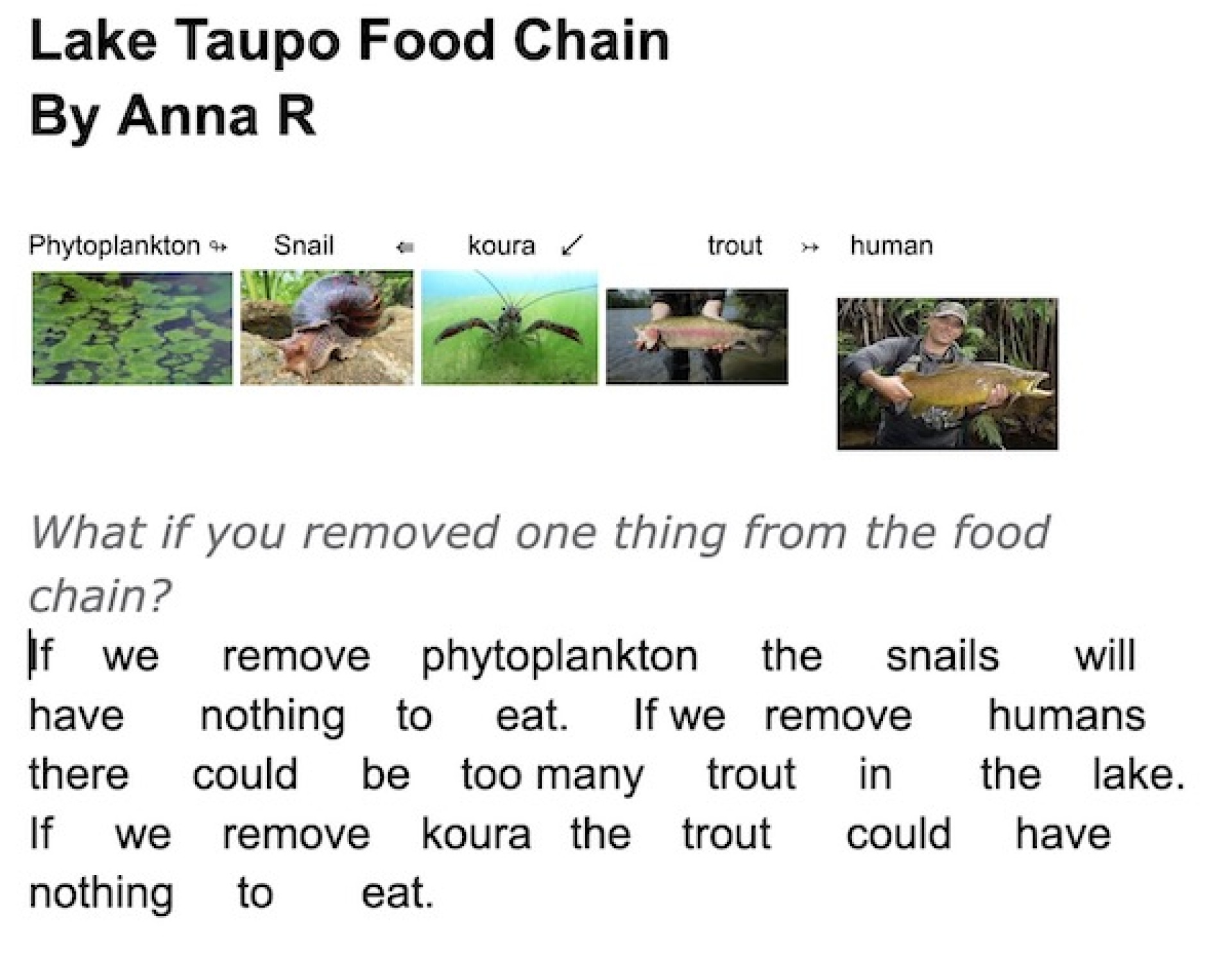We were surprised to read that our lake is 186 metres deep at its deepest part. Does that sound deep to you?
It is important to have a food chain for a healthy ecosystem. (Jaxon Room 4)
We know that all living things can be grouped by the way they get energy. Plants get their energy from the sun. Animals get energy from the food they eat. They can be classified as herbivores, omnivores or carnivores.
Herbivores are animals that don’t eat meat, they only eat plants explains Molly from Room 1.
A carnivore is an animal that only eats meat, like the trout that live in Lake Taupō. described Katie from Room 1.
An omnivore eats both plants and meat, humans are omnivores, remembered Scott from Room 1.
Plants get their energy from the sun, lake plants can grow in water. expressed Dorian, Room 4.
The students researched the animals that live in our lake, then used clever digital technology skills to make simple food chain diagrams.


What if one thing was removed from the food chain? What do you think would happen? Here are some extracts from Room 4’s research and writing:
If we removed Humans from the food chain, the lake might be overpopulated with trout. (Kaylah)
If we remove humans from the food chain, the trout could overtake and the koura wouldn’t grow fast enough maybe. (Tegan)
If you removed phytoplankton from the lake, unfortunately the trout, snails and koura could suffer and die. (Lilee)


Keywords: inquiry, research skills, skimming and scanning, making decisions, Lake Taupō, ecosystems, vocabulary


Comments are disabled for this post.